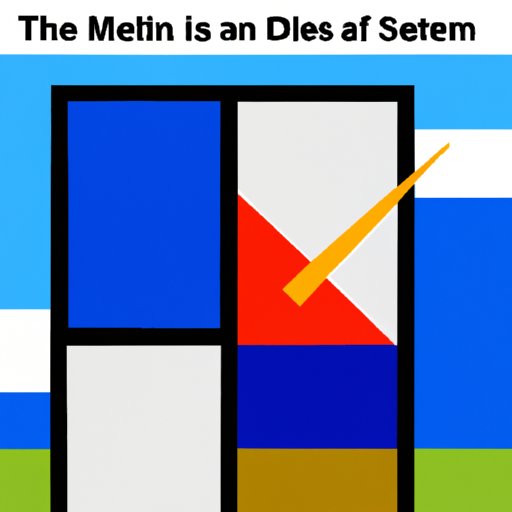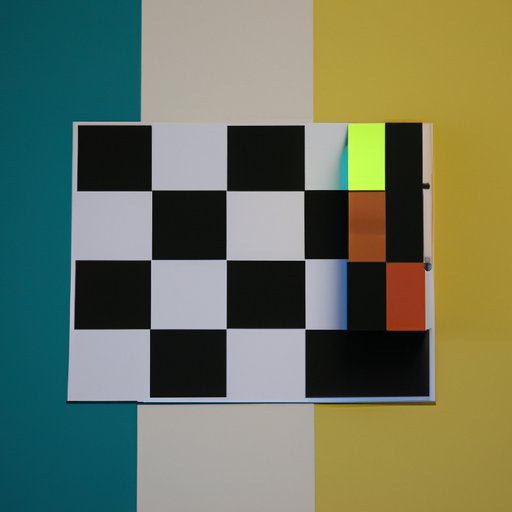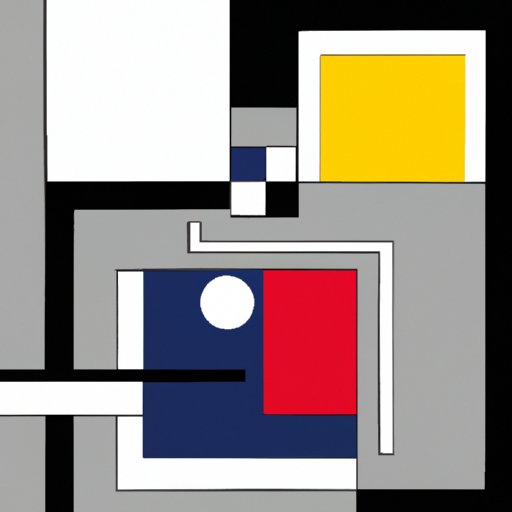Introduction
De Stijl (or ‘The Style’ in English) was an influential art movement that emerged in the Netherlands during the early part of the 20th century. It was founded by a group of Dutch painters, architects, and designers, including Piet Mondrian, Theo van Doesburg, and Gerrit Rietveld. The movement aimed to create a universal visual language that could be used to express ideas and emotions without relying on traditional artistic conventions. As such, it is considered to be one of the major precursors to modern art.
Exploring the Visual Language of De Stijl Artists
The visual language of De Stijl was characterized by its use of abstract geometric shapes, lines, and primary colors. These elements were often arranged in asymmetrical compositions, which served to emphasize the flatness of the canvas. The movement also sought to eliminate all traces of representational art, instead focusing on the formal qualities of line, shape, and color.
Geometric shapes were an important component of De Stijl art. Mondrian, for example, often used rectangles and squares to create dynamic compositions. He was particularly interested in exploring the relationship between different shapes and their effects on the overall composition. Lines were also employed to create movement and tension within the artwork. Van Doesburg, for instance, often used curved lines to add an element of dynamism to his paintings.
Primary colors – red, yellow, and blue – were also a key component of De Stijl art. Mondrian was especially interested in exploring the expressive potential of these colors, and he often used them to create bold and vivid compositions. Other artists, such as van Doesburg, used more muted tones to create softer and more subtle works.

Understanding the Influence of De Stijl Art in Modern Art
De Stijl has had a profound influence on modern art. Many contemporary artists have drawn inspiration from the movement, creating works that incorporate elements of its visual language. For example, artist Ellsworth Kelly is known for his use of geometric shapes and vibrant colors, which are reminiscent of De Stijl’s aesthetic. Similarly, minimalist artist Sol LeWitt often employed lines and squares to create his iconic works.
The impact of De Stijl is also evident in the work of pop artist Roy Lichtenstein. His paintings often incorporate bright colors and bold lines, which are clearly inspired by the visual language of De Stijl. Additionally, many contemporary abstract painters have adopted the use of primary colors and geometric shapes in their work, further emphasizing the legacy of De Stijl art.

Examining the Contributions of Key De Stijl Artists
Piet Mondrian is widely regarded as the most influential artist associated with the De Stijl movement. He was a pioneer of abstract painting, and his works are characterized by their use of geometric shapes and primary colors. His most famous painting, Composition with Red, Yellow, and Blue (1921), is considered to be one of the most iconic works of De Stijl art.
Theo van Doesburg was another key figure in the movement. He was a painter, architect, and theorist, and he was instrumental in developing the visual language of De Stijl. His paintings often incorporated curved lines and soft colors, which provided a counterpoint to Mondrian’s more rigid compositions. He also wrote extensively about the principles of De Stijl, and his writings remain influential today.
Gerrit Rietveld was a furniture designer who was closely associated with the De Stijl movement. He was renowned for his use of bold colors and geometric shapes, which he used to create some of the most iconic pieces of modern furniture. His Red and Blue Chair (1917) is considered to be a masterpiece of De Stijl design.
Analyzing the Relationship Between De Stijl and Other Art Movements
De Stijl had a significant influence on other avant-garde movements. It was closely related to Constructivism, a Russian art movement that developed in the early 20th century. Like De Stijl, Constructivism aimed to create a visual language that could be used to communicate ideas and emotions without relying on traditional artistic conventions. Similarly, De Stijl was also closely linked to Futurism, a movement that emerged in Italy in the early 1900s.
De Stijl was also strongly influenced by Dadaism. This anti-art movement rejected traditional artistic conventions and embraced chaos and absurdity. While De Stijl sought to create a unified visual language, Dadaism embraced randomness and chance. However, both movements shared an interest in exploring the expressive potential of line, shape, and color.
Comparing the Theories Behind De Stijl to Other Avant-Garde Movements
De Stijl shares many similarities with other avant-garde movements, such as Abstraction, Minimalism, and Surrealism. All three of these movements sought to explore the expressive potential of line, shape, and color. They also sought to eliminate all traces of representational art, instead emphasizing the formal qualities of the artwork.
Abstraction and Minimalism, in particular, share many similarities with De Stijl. Both movements explored the use of geometric shapes and primary colors, and they sought to create works that were simple and uncluttered. Surrealism, on the other hand, was more concerned with exploring the unconscious mind and tapping into the power of dreams and fantasies.

Investigating the Role of Color in De Stijl Art
Color played an important role in De Stijl art. The movement’s founders believed that color had the power to convey emotion and meaning, and they sought to use it to create powerful works of art. To this end, they often employed a limited palette of primary colors, which they believed had the ability to evoke strong feelings.
Mondrian was especially interested in exploring the expressive potential of color. He developed a theory of color harmony, which proposed that certain combinations of colors could create an emotional response. He also believed that the use of primary colors could create a sense of balance and unity in a composition.
De Stijl artists also favored monochromatic palettes. These were created by using various shades of one color, which allowed for subtle variations in tone and texture. This approach was particularly favored by van Doesburg, who often used muted tones to create softer and more delicate works.
Conclusion
De Stijl was an influential art movement that sought to create a universal visual language. Its founders developed a unique aesthetic that was characterized by its use of abstract geometric shapes, lines, and primary colors. This visual language has had a lasting influence on modern art, and many contemporary artists continue to draw inspiration from the movement.
The contributions of key De Stijl artists, such as Piet Mondrian, Theo van Doesburg, and Gerrit Rietveld, are still felt today. Their works remain some of the most iconic examples of De Stijl art, and they have had a profound influence on other avant-garde movements. The theories behind De Stijl continue to resonate with modern audiences, and its legacy lives on in the work of contemporary artists.
(Note: Is this article not meeting your expectations? Do you have knowledge or insights to share? Unlock new opportunities and expand your reach by joining our authors team. Click Registration to join us and share your expertise with our readers.)
